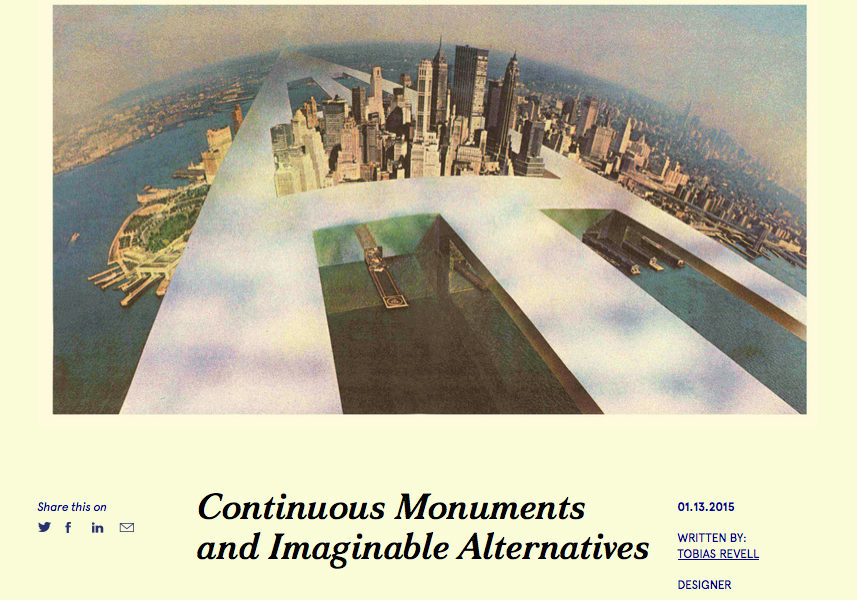
An essay for Amateur Cities on the use of design to create imaginable alternatives to market hegemony and the ultimate objective of the 'Smart City.'
Much like Superstudio saw in the late 1960s, designers and architects now often find themselves in a position working – often not by choice – as indentured servants to the globe-straddling demi-gods of data. The consumer market is bloated and heaving with products and projects promising streams of data that will turn your sleeplessly hellish, austerity-riddled corpse-life into the stuff of Silicon Valley dreams. Cups that can measure nutritional content, armbands that tell if you are too fat, apps that can tell you if you have had the perfect amount of sleep. Not to mention, as I have been careful to avoid, the ceaseless and oppressive surveillance brought in to prop up the modern state under the auspices of anti-terror measures. And, at the top of our new Continuous Monument is of course the Smart City masterplan.
These dreams of a utopian-datascape-as-city are flawed in too many ways to count. The primary complaint has to be that, much like the German forestry science and the thousands of unbuilt masterplans littering architecture museums, they simplify the complex and entangled nature of reality. If to be described cynically, they serve as a Douglas Adams-esque living mainframe in which the harvest and deployment of data is to be made as efficient and profitable as possible. In that respect the financial growth can be understood as their natural rhetorical follower. Less cynically, they are the cold lifeless shells of cities lacking the histories, fallibility, love, excitement and passion that make a great place to be.
01.2015
Much like Superstudio saw in the late 1960s, designers and architects now often find themselves in a position working – often not by choice – as indentured servants to the globe-straddling demi-gods of data. The consumer market is bloated and heaving with products and projects promising streams of data that will turn your sleeplessly hellish, austerity-riddled corpse-life into the stuff of Silicon Valley dreams. Cups that can measure nutritional content, armbands that tell if you are too fat, apps that can tell you if you have had the perfect amount of sleep. Not to mention, as I have been careful to avoid, the ceaseless and oppressive surveillance brought in to prop up the modern state under the auspices of anti-terror measures. And, at the top of our new Continuous Monument is of course the Smart City masterplan.
These dreams of a utopian-datascape-as-city are flawed in too many ways to count. The primary complaint has to be that, much like the German forestry science and the thousands of unbuilt masterplans littering architecture museums, they simplify the complex and entangled nature of reality. If to be described cynically, they serve as a Douglas Adams-esque living mainframe in which the harvest and deployment of data is to be made as efficient and profitable as possible. In that respect the financial growth can be understood as their natural rhetorical follower. Less cynically, they are the cold lifeless shells of cities lacking the histories, fallibility, love, excitement and passion that make a great place to be.
01.2015